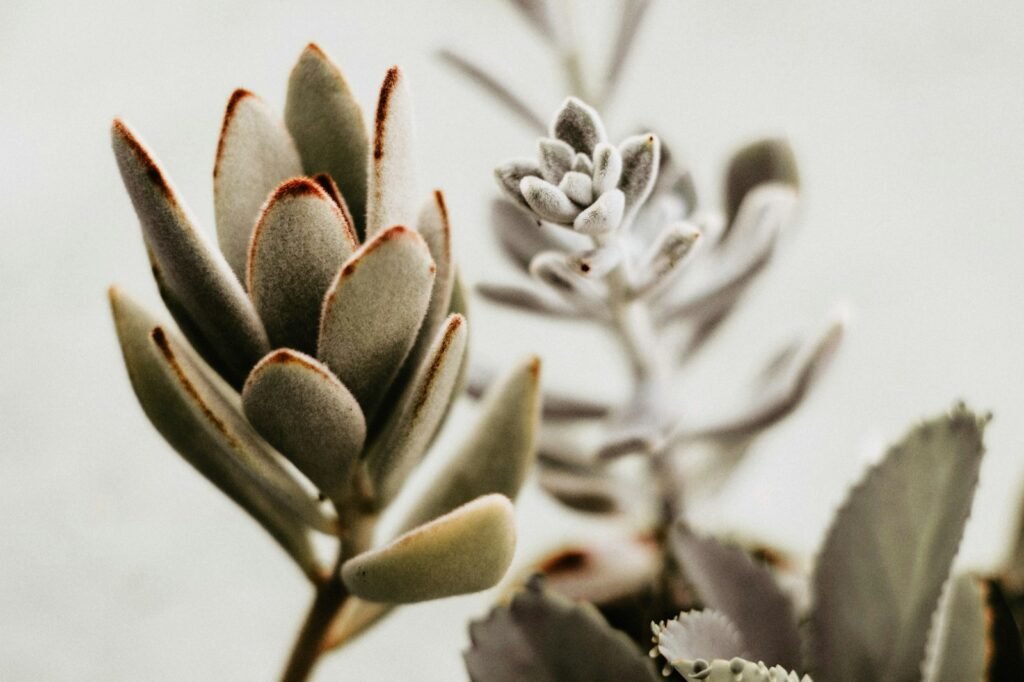
Have you ever wondered why do some succulents have fuzzy leaves? It turns out that this unique characteristic serves several important purposes. Firstly, the fuzziness provides a layer of protection, shielding the plant from harsh sunlight and preventing excessive evaporation. Additionally, these hairs act as tiny bumps, allowing the succulent to trap moisture in the air and absorb it through the leaves, a survival strategy for plants thriving in arid environments. Furthermore, the fuzzy leaves can deter herbivores by making the succulent less palatable or more difficult to eat. So, next time you come across a succulent with fuzzy leaves, take a moment to appreciate the clever adaptations that enable it to thrive in its natural habitat.
Reasons for Fuzzy Leaves in Succulents
Water Conservation
One of the main reasons why some succulents have fuzzy leaves is to aid in water conservation. The dense layer of fine hairs on the leaves acts as a barrier, reducing water loss through evaporation. These hairs create a microclimate around the leaf surface, allowing the plant to retain precious moisture even in arid conditions. The fuzzy texture serves as a natural adaptation that helps the succulents survive in regions with limited water availability.
Protection Against Sunburn
Another advantage of fuzzy leaves in succulents is their ability to protect against sunburn. The dense layer of hairs on the leaves acts as a natural sunscreen, shielding the plant from intense ultraviolet (UV) radiation. This protection is particularly crucial for succulents that grow in hot and sunny environments, where exposure to excessive sunlight can lead to leaf damage. By having fuzzy leaves, these succulents are better equipped to withstand the harsh rays of the sun and avoid sunburn.
Reducing Transpiration
Transpiration, the process by which plants lose water through small openings called stomata, can be a significant challenge for succulents in dry climates. However, the fuzzy texture of their leaves aids in reducing transpiration rates. The fine hairs on the leaf surface create a barrier that slows down the movement of air over the stomata, minimizing water loss. This adaptation allows the succulents to conserve water and thrive in environments where moisture is scarce.
Preventing Damage from Predators
Having fuzzy leaves can also serve as a defense mechanism against certain herbivorous predators. The hairs on the leaves act as a physical barrier, making it more difficult for insects and animals to reach the succulent’s tissues and feed on them. The fuzzy texture can be irritating or uncomfortable to some creatures, deterring them from nibbling on the plant. By having fuzzy leaves, succulents protect themselves from potential damage and ensure their survival.
Attracting Beneficial Insects
The fuzzy leaves of succulents can also play a role in attracting beneficial insects. The fine hairs on the leaf surface create a favorable environment for certain insect species, such as predatory mites or ladybugs, which can help control pests in the vicinity. The fuzzy texture provides a place for these beneficial insects to find shelter and reproduce, encouraging their presence in the garden or natural habitat. This symbiotic relationship benefits both the succulent and the insect population.
Trapping Moisture
Succulents with fuzzy leaves have an additional advantage in their ability to trap moisture. The fine hairs on the leaf surface can capture humidity from the air, acting like tiny sponges that absorb and retain water particles. This trapped moisture can then be absorbed by the succulent’s roots, providing a supplementary source of hydration during periods of low rainfall or high temperatures. By trapping moisture, the fuzzy leaves enable the succulents to better withstand drought conditions.
Insulating from Extreme Temperatures
Fuzzy leaves in succulents also provide insulation against extreme temperatures. The layer of fine hairs acts as a barrier, reducing heat absorption from the environment and preventing excessive temperature fluctuations. This insulation helps the plant maintain a more stable internal temperature and protects it from both extreme heat and cold. By having fuzzy leaves, succulents can better adapt to fluctuating climate conditions and thrive in a wider range of environments.
Enhancing Photosynthesis
The fuzzy texture of succulent leaves can also have a positive impact on photosynthesis. The hairs on the leaf surface create a microenvironment that promotes optimal light conditions for the plant’s photosynthetic processes. By scattering and diffusing sunlight, the fine hairs ensure that the leaves receive sufficient but not excessive light for photosynthesis. This adaptation allows the succulents to maximize their energy production and grow efficiently in their specific habitats.
Reducing Reflective Heat
In addition to reducing heat absorption, fuzzy leaves in succulents also help to minimize reflective heat. The fine hairs on the surface of the leaves effectively scatter and disperse sunlight, reducing the amount of heat that is reflected back onto the plant. By preventing the buildup of excessive heat, succulents with fuzzy leaves can avoid damage from overheating and maintain optimal growth conditions.
Aesthetic Appeal
Last but not least, the fuzzy leaves of succulents add to their aesthetic appeal. The soft and velvety texture of these leaves creates an attractive visual contrast in the garden or indoor plant collection. The combination of the unique texture and the vibrant colors and shapes of succulent leaves makes them highly sought after by plant enthusiasts and collectors. The fuzzy leaves contribute to the overall beauty and charm of succulents, making them popular additions to any green space or living area.
In conclusion, the fuzzy leaves in succulents serve multiple purposes. They aid in water conservation, protect against sunburn, reduce transpiration, prevent damage from predators, attract beneficial insects, trap moisture, insulate from extreme temperatures, enhance photosynthesis, reduce reflective heat, and add aesthetic appeal. These adaptations allow succulents with fuzzy leaves to thrive in diverse environments and make them fascinating and desirable plants to grow and enjoy.


